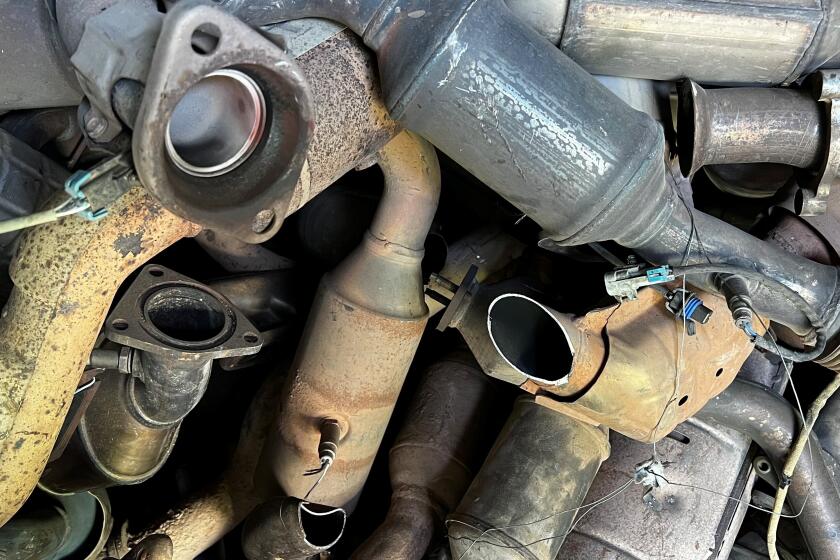Aeromexico Says FAA Failures Led to Disaster
- Share via
WASHINGTON — The failure of the Federal Aviation Administration to report and investigate unauthorized intrusions by private pilots into controlled airspace in Los Angeles created “hazardous flight conditions” and increased the risk of a midair collision involving a commercial airliner, attorneys for Aeromexico have told federal investigators.
In a recent filing with the National Transportation Safety Board, the airline also maintained that it was impossible for the crew of its DC-9 jetliner to avoid colliding with a small private plane over Cerritos on Aug. 31.
Aeromexico Flight 498, flying from Mexico City to Los Angeles, collided with a plane that was flying at 6,500 feet in controlled airspace without permission. Eighty-two people were killed, including 15 on the ground.
Looking for the Cause
“The investigation is actively under way,” said Mike Benson, a spokesman for the safety board, adding that the board may determine the probable cause of the accident this summer. Aeromexico, the Airlines Pilots Assn. and others interested in the investigation filed comments for the safety board to consider as it makes its final ruling on the cause of the accident.
In its filing, Aeromexico, which is contending with negligence and wrongful-death lawsuits seeking millions of dollars in damages, termed “a complete failure” the FAA’s reporting, investigation and prosecution of unauthorized intruders into the Los Angeles terminal control area (TCA).
The TCA is designed primarily to separate private airplanes and commercial airliners, particularly those jets that land at and take off from Los Angeles International Airport.
‘Hazardous Conditions’
“The FAA’s failure to investigate and prosecute TCA intrusions created hazardous flight conditions, and specifically, an increased risk that an aircraft intruding into the TCA would strike a commercial airliner on approach to Los Angeles International Airport,” Aeromexico said.
In addition, the airline said that “available evidence leads inevitably to the conclusion” that the small plane did appear on controllers’ radar screens before the accident. The air traffic controller on duty has testified that he did not see the plane on his screen.
Aeromexico said that a March 4 replay of FAA computer tapes that automatically record any system anomalies showed no loss of data. However, the airline said that the use of older equipment to decode transponder signals for display on the radar scope could have hampered the controller’s ability to see the small plane on his screen.
Small Size, High Speed
As for the DC-9 jet, Aeromexico maintained that its crew “could not have avoided this collision” because the small size of the private plane and the speed at which the two planes were approaching each other made it highly unlikely that the Aeromexico crew saw the other plane until a few seconds before the collision.
Aeromexico attorneys also argued that the “see-and-avoid” concept--where pilots look out the cockpit for other aircraft--”is not an effective means of collision avoidance for turbojet aircraft operating in a terminal control area.”
In a separate filing, the Air Line Pilots Assn., which represents commercial airline pilots, also challenged the see-and-avoid concept as inadequate for controlling the mix of high-performance commercial aircraft and lower performance general aviation planes in the terminal control areas.
Outdated Concept
The pilots’ group said that the concept, which was originally adopted for slow-moving maritime vessels and applied to aviation in the 1920s, should be restricted to uncontrolled airports where slow-flying general aviation aircraft operate.
The pilots’ group urged the safety board to attribute the probable cause of the Aeromexico accident to deficiencies in the air traffic control system that fail to provide adequate separation in terminal areas where commercial and private aircraft are sharing airspace.
The airline pilots also urged that an on-board collision avoidance system known as TCAS III, presently under development by the FAA, should be required for all U.S. air carriers. The system would alert pilots to the location of other aircraft and suggest maneuvers that would prevent a collision.
More to Read
Sign up for Essential California
The most important California stories and recommendations in your inbox every morning.
You may occasionally receive promotional content from the Los Angeles Times.










